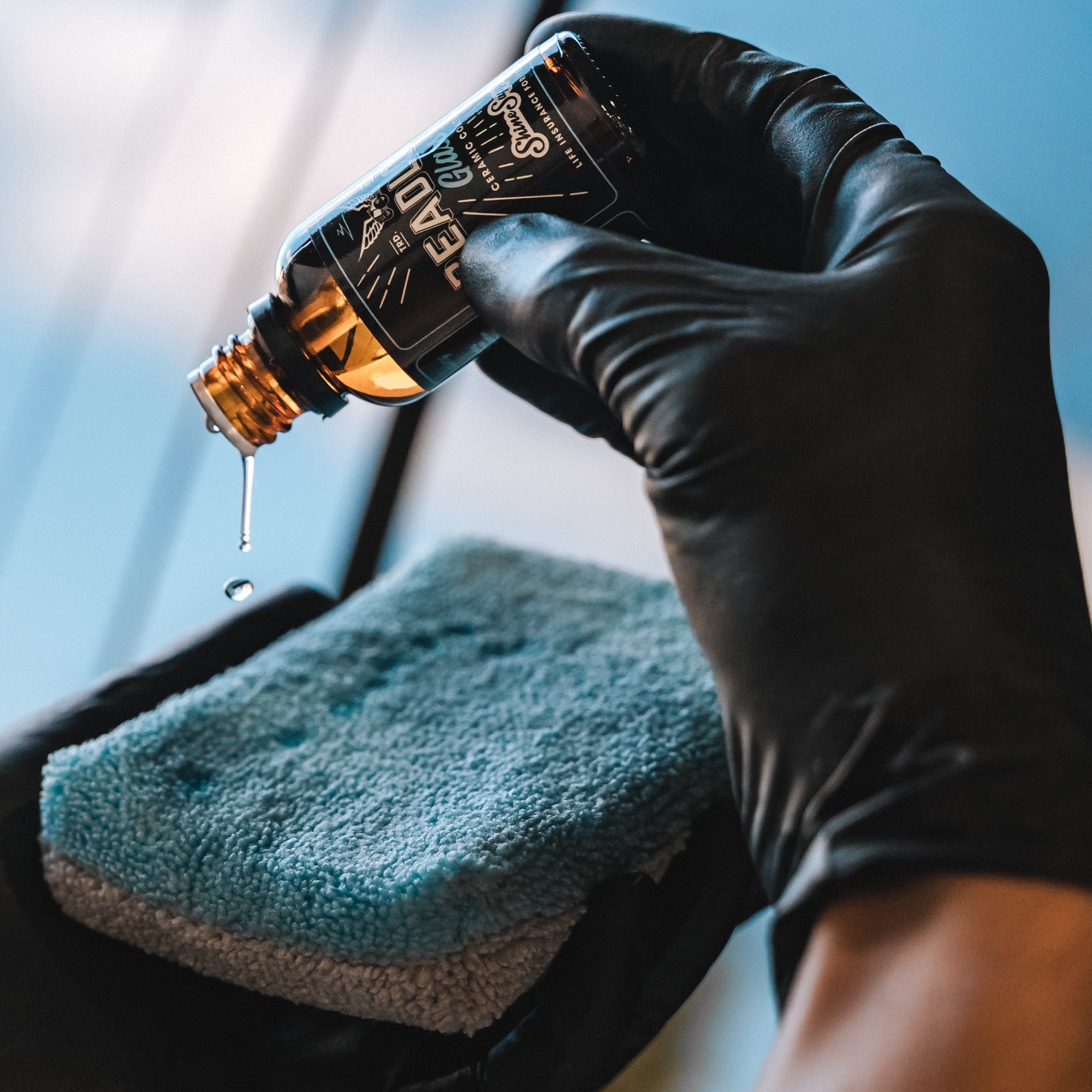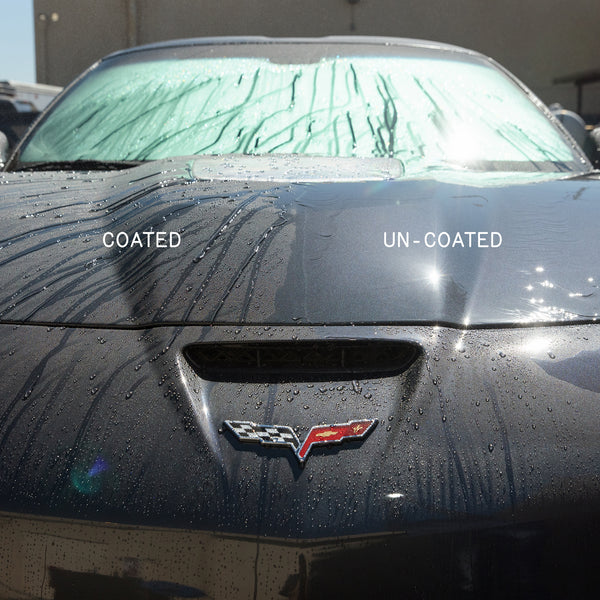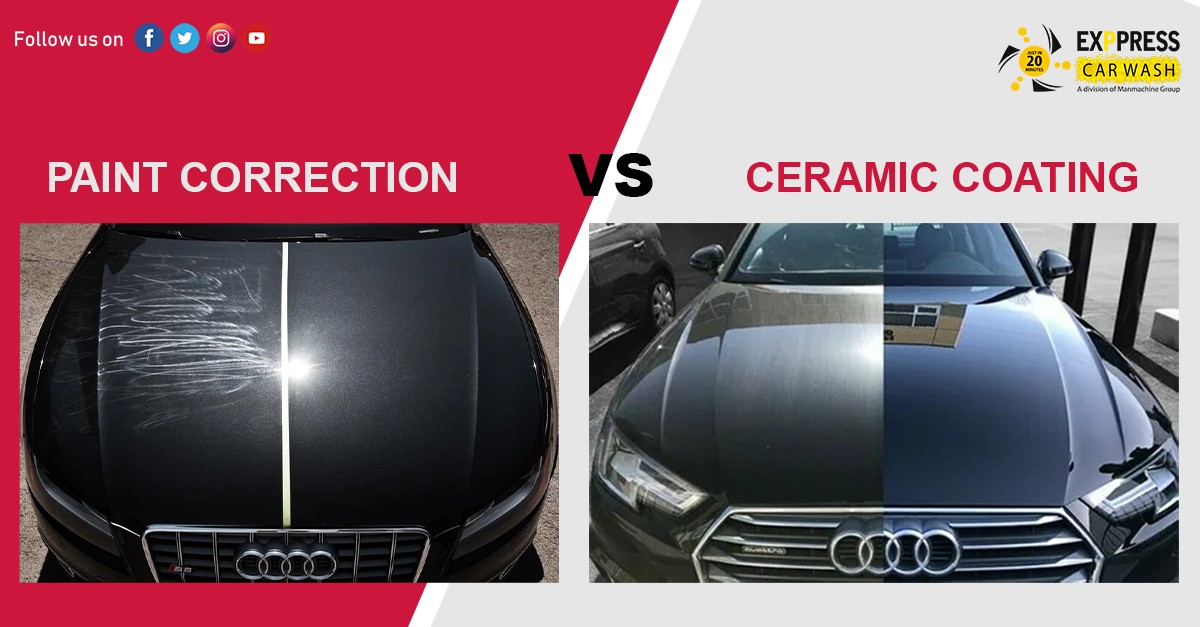The Role of Ceramic Coating in Maintaining a Remarkable Complete on Your Car
The Role of Ceramic Coating in Maintaining a Remarkable Complete on Your Car
Blog Article
Exploring the Science Behind Ceramic Finish and Its Influence On Cars And Truck Describing
The application of ceramic layer in car detailing represents a substantial innovation in automobile care, rooted in its innovative chemical homes, mainly silica dioxide and titanium dioxide. Recognizing the science behind these products reveals not just the protective advantages they provide however also their duty in enhancing an automobile's visual longevity. As we explore the complexities of the application procedure and the lasting implications for car upkeep, it comes to be clear that the choice of ceramic finishing can essentially change one's strategy to automobile care. What considerations should be made before committing to this transformative option?
What Is Ceramic Finish?
Ceramic finish is a contemporary solution that has actually obtained appeal in the automobile detailing sector for its capacity to supply lasting defense for vehicle surfaces. This innovative protective layer is generally made up of silica dioxide (SiO2), which creates a solid bond with the automobile's paint, developing a resilient guard against environmental contaminants. Unlike conventional wax or sealants, ceramic finishes use premium resistance to UV rays, chemical discolorations, and physical abrasions.
The application of ceramic finishing entails a careful process, where the vehicle's surface is extensively cleaned and decontaminated prior to the finish is used (Ceramic Coating). As soon as treated, the coating improves the car's gloss, depth, and quality, offering a showroom-quality finish that lasts for several years. One of the vital advantages of ceramic finish is its hydrophobic residential or commercial properties, which push back water and dust, making upkeep less complicated and minimizing the frequency of cleans
The Chemistry of Ceramic Finish
An essential element of ceramic finish depends on its chemical composition, primarily identified by the existence of silica dioxide (SiO2) This substance is indispensable to the development of a long lasting, safety layer that bonds chemically to the vehicle's surface. When used, the SiO2 molecules go through a procedure called polymerization, wherein they create a network of interconnected frameworks. This leads to a robust, hydrophobic surface that wards off water and impurities.
Along with SiO2, many ceramic coatings include titanium dioxide (TiO2) and various other ingredients to enhance their performance features. TiO2, for example, adds to raised hardness and chemical resistance. The communication between these compounds develops an unique molecular framework that provides a high degree of protection against ecological elements such as UV rays, acid rain, and oxidation.
Furthermore, the application process usually includes a meticulous preparation of the surface area to make certain optimum adhesion of the finish. This chemistry not just makes certain a durable surface yet likewise boosts the visual appeal of the car. Understanding the complex chemistry behind ceramic coatings is vital for describing experts who aim to offer remarkable protection and longevity for their customers' cars.
Advantages of Ceramic Coating
While detailing professionals often highlight the advantages of ceramic coverings, their benefits expand much past looks. The main benefit is premium security against environmental pollutants. Ceramic finishings create a hydrophobic surface that repels gunk, water, and dust, substantially minimizing the regularity of washes and the effort called for to keep an automobile's look. This safety layer additionally guards the paint from hazardous ultraviolet rays, avoiding oxidation and fading over time.
Furthermore, ceramic finishings enhance the longevity of the automobile's finish. Unlike traditional waxes or sealants, which might last a couple of months, ceramic finishings can endure for several years, giving a lasting solution for auto treatment. This resilience translates to set you back savings, as proprietors are much less most likely to need regular reapplication.
Additionally, ceramic finishings are immune to chemical discolorations and etching, which can take place from acidic compounds like bird droppings or tree sap. This resistance not just maintains the car's visual appeals yet also lessens potential damages - Ceramic Coating. Generally, the investment in ceramic finish offers vehicle owners a substantial return in terms of defense, convenience of maintenance, and long-lasting aesthetic allure, making it an increasingly popular selection in the world of automobile detailing
Application Process Clarified

As soon as the surface is appropriately prepared, the ceramic finish can be used. It is normally carried out in a controlled atmosphere, such as a garage or describing bay, to avoid contamination from dust and particles. Utilizing an applicator pad, the technician uses the finish in small sections, functioning in a crosshatch pattern to ensure even insurance coverage. It is necessary to comply with the maker's instructions pertaining to application thickness and healing times.
After applying the layer, the car should be allowed to treat, which might take a number of hours to numerous days, depending on the particular item used. During this period, it is important to maintain the lorry far from moisture and contaminants. As soon as treated, the ceramic covering forms a strong bond with the paint, offering improved defense and a glossy coating. Proper application is important to take full advantage of the long life and effectiveness of the ceramic finishing.

Lasting Influence On Car Treatment
The long-lasting impact of ceramic coating on vehicle care is significant, as it fundamentally modifies just how proprietors preserve their vehicles. By producing a sturdy, hydrophobic layer on the vehicle's surface, ceramic finishes minimize the adherence of dirt, grime, and pollutants. This building decreases the regularity of cleaning required, eventually preserving water and cleansing products.
Furthermore, the UV security used by Look At This ceramic coverings aids to avoid oxidation and fading of the vehicle's paint, maintaining its aesthetic appeal and resale value over time - Ceramic Coating. This protective obstacle additionally minimizes the possibility of scrapes and swirl marks, which prevail issues in standard paint surfaces
Additionally, ceramic layers promote easier maintenance, permitting owners to cleanse their lorries with very little initiative. The smooth surface makes it tough for impurities to bond, making it possible for easier removal throughout routine cleaning.
Over time, the investment in ceramic coating may lead to cost financial savings in automobile care items and services. In general, the enduring benefits of ceramic layers not only boost the look of cars but also contribute to a much more efficient and sustainable strategy to car maintenance.
Final Thought
To conclude, the application of ceramic finish represents a substantial improvement in automobile describing, driven by its unique chemical structure of silica dioxide and titanium dioxide. This modern technology not just enhances the visual charm of automobiles yet also offers durable defense against ecological dangers and put on. The long-term benefits, consisting of decreased upkeep regularity and boosted toughness, emphasize the worth of ceramic coverings as a crucial financial investment for keeping car appearance and stability over time.

Report this page